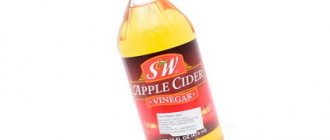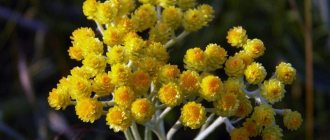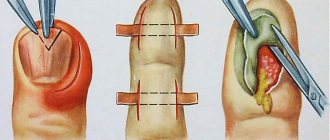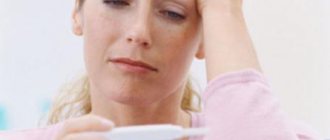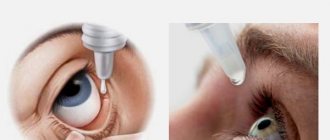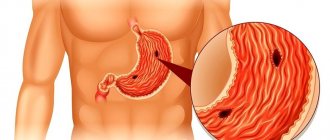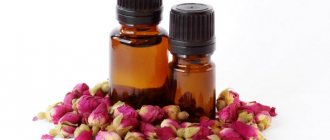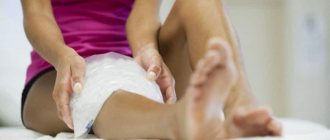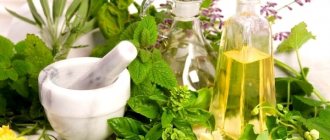How to cure a bend in the gallbladder with folk remedies
Kinking of the gallbladder occurs quite often in comparison with other diseases of this organ. The formation of this pathology is facilitated by many factors that can accompany a person in the process of his life or be congenital.
Today we will find out what could be the cause of a bend in the neck of the gallbladder, how to recognize the disease by its first symptoms, and also learn about traditional medicine that is used to treat this pathology.
Classification
A twisted gallbladder is studied in each specific case several times: the first - on an empty stomach, the second - after eating egg whites. This allows us to determine the nature of the pathology. If the condition is congenital, the constriction of the gallbladder in a child and an adult will not change its position, and the shape of the organ itself will remain the same.
A functional bend is one that occurs for a certain time; a fixed bend is persistent. The condition is also distinguished by the localization of the pathological process. Experts highlight:
- bending of the gallbladder in the cervical area;
- inflection in the body of the gallbladder;
- bend of the lower third;
- bile duct torsion.
A bend in the neck of the gallbladder occurs most often, and pathology in the middle third causes the most dangerous consequences.
The disease manifests itself in various degrees of organ deformation, which depends on the location of the pathological process. The bubble can take the form of a hook, an hourglass, an arc, or a spiral. If the organ is bent twice, experts talk about an S-shaped deformation of the gallbladder (or a C-shaped gallbladder, as people who are not related to medicine write).
This problem is most typical for young children.
There is another problem that belongs to the list of deformations - the presence of constrictions. This is a narrowing of the organ in a circle. Usually the condition is congenital, but it can disappear without a trace after the child reaches 3–5 years of age. The types of pathology and their anatomical features can be seen in the photo below.
Etiology of gallbladder disease
The very first step in the treatment of gallbladder kinks will be to find out the causes of this pathology. All further therapy will depend on the factors that could lead to this disease.
They can be congenital (if at the stage of formation of the liver or gallbladder of the embryo there was a developmental disorder) or acquired. The latter include the following reasons:
- obesity and overweight;
- unhealthy eating behavior: constant overeating, alternating with prolonged absence of food;
- abnormal position of the organ on the lower part of the liver, which provokes its excessive mobility;
- changes in the location of the internal organs of the abdominal cavity: lowering or moving to the side relative to the norm;
- sedentary and sedentary lifestyle;
- physical activity in the form of lifting heavy loads, sudden, unnatural movements;
- enlargement of the gallbladder itself or organs located near it - kidneys, liver;
- diseases of this organ, accompanied by an inflammatory process - cholecystitis;
- stone disease of an organ that changes its shape.
What is a bend in the gallbladder?
Gallbladder bending is a pathological change in the human digestive system, which may be asymptomatic and not require treatment.
This is an anomaly formed at the site where the bottom of the bladder flows into the body and arises due to changes in the gallbladder, due to which it takes on a crescent shape. For children, such a pathology may be the norm of physiology. During the process of growth, the features in the abdominal cavity will change, and everything will return to the anatomical norm. This condition of the bubble can last a long time and cannot be treated. In this case, there is a possibility of disruption of bile secretion, which contributes to an increase in the level of bilirubin in the blood.
Symptoms of inflection
At the beginning of the development of pathology, symptoms may not appear at all. When the deformation is significant, the patient may experience nonspecific symptoms characteristic of many other diseases.
Therefore, it is so important to regularly visit a doctor to prevent the occurrence of pathologies and undergo a full medical examination if the first symptoms of organ deformation appear:
- Feeling of nausea, aggravated after eating fatty and fried foods, and strong physical exertion.
- Attacks of vomiting. Most often, this symptom is inherent in the presence of inflammatory processes (cholecystitis, peritonitis).
- Dull and aching painful sensations in the abdominal area, often radiating to the spine, right hypochondrium, and collarbone.
- Indigestion and problems with stool (diarrhea or constipation), excessive gas formation, bloating and a feeling of heaviness.
- Deterioration or lack of appetite.
- Frequent heartburn and belching.
- Bitter taste in the mouth due to disruption of the gallbladder and the release of bile into the stomach cavity.
- Changes in the color of stool to be too light, urine also changes color.
If there is an inflection accompanied by peritonitis, more acute symptoms are possible: severe headache, high fever, feeling of weakness and fatigue, muscle pain, pain throughout the abdominal cavity.
If you discover symptoms of a bent gallbladder in a child, before starting treatment, you need to undergo an examination, consult a doctor, and, based on his recommendations, begin drug therapy. In children, as a rule, there is a congenital etiology of this disease. This means that at the 5th month of the embryonic period there was a failure in the formation of the liver and gall bladder.
Symptoms of a bent gallbladder in children
When bent at birth, signs of the disease are found extremely rarely.
But depending on the stage of development of the pathology, as well as its location, symptoms may appear:
- gagging, especially after eating;
- painful sensations under the ribs on the right side;
- pain in the stomach area;
- profuse sweating;
- yellowing of the skin and sclera;
- pale skin color on the face;
- bitter taste and plaque in the mouth.
There is also an enlargement of the gallbladder and flatulence. With numerous bends, there is a risk of bile entering the esophagus and causing peritonitis. But this type of pathology is rarely diagnosed.
When bile stagnates, caused by the presence of a bend in the gallbladder, there is a possibility of symptoms of jaundice: yellowing of the skin and mucous membranes.
Diagnosis of the disease
Before starting treatment, it is necessary to determine the nature of the pathology that caused the above symptoms. This is only possible in a hospital setting. Namely, an ultrasound examination (echography) will determine the position of the organ relative to the physiological norm, find out the exact location of the lesion, as well as the walls, duct and neck of the bladder. In the presence of this pathology, a deflection forms at the junction of the organ body and the neck.
In order to find out the main cause of the bend (congenital or acquired), an ultrasound examination is first performed on an empty stomach. Next, the patient eats a product that stimulates abundant bile secretion (egg yolk is often used), and echography is repeated.
The results obtained are compared: if changes have occurred in the position of the organ or bile secretion has been increased, this means that the nature of the pathology is acquired. If no changes in the reaction to food were found, the cause of the inflection lies in intrauterine development. Its treatment largely depends on the cause of the pathology.
Diagnostics
The most accurate picture of the pathology is provided by an ultrasound examination of the patient.
Ultrasound is able to determine exactly where the localization of the inflection occurred, find out the degree, as well as the type of pathology. For a reliable result, the examination is first carried out on an empty stomach, and a second examination can be carried out half an hour after breakfast. For breakfast, before the re-examination, you need to eat choleretic products (butter, egg yolk). If the bend is congenital, the shape of the organ after loading with breakfast will remain the same (deformed).
Treatment of gallbladder kinks at home
In folk medicine, recipes for decoctions and tinctures from various natural and natural ingredients have long been used to treat diseases of the gallbladder, in particular, and such pathologies as inflection.
All these recipes can accompany treatment and promote recovery, or have an excellent preventive effect.
Recipes for decoctions and tinctures with a choleretic effect
- Collection of medicinal herbs. To prepare, mix the crushed ingredients in the following proportions: 2 teaspoons of mint leaves, 2 teaspoons of immortelle flowers, 4 spoons of chamomile flowers, 4 spoons of trifoliate and dandelion, 5 spoons of St. John's wort herb. This collection can be prepared manually, or purchased at a pharmacy as a choleretic collection. One teaspoon of the mixture is poured into 500 ml of boiled water and left to infuse for 30 minutes in a place protected from the sun. The filtered drug is consumed 3 times a day, 200 ml before meals.
- Calendula infusion. Calendula flowers in the amount of 1 tablespoon are poured into 200 ml of boiled water. The finished infusion is consumed three times a day, 50 ml. Calendula is famous for its excellent choleretic effect, and it is also used in the treatment of inflammation of the gallbladder.
- Milk thistle. The fruits of this plant are consumed raw and crushed in a volume of 15 g before eating, always washed down with water. Also, crushed milk thistle fruits are added to oatmeal, fermented baked milk, and kefir, which makes their consumption easier and invisible.
- Corn silk. Used as a tincture of water or alcohol tincture. To prepare an infusion at home, take one tablespoon of chopped and dry herbs and add 200 ml of boiled water. The prepared and filtered infusion is drunk half an hour before meals, 50 g three times a day. You can also use an alcohol infusion of corn silk, which can be purchased at a pharmacy. For 150 ml of water you will need 35 drops of alcohol tincture. It is taken in the same way as the tincture of water: before meals, 3 times a day. Corn silk extract relieves unpleasant symptoms of gallbladder inflection, such as nausea and pain in the hypochondrium.
- Rose hip. Rosehip decoction, in comparison with other choleretic tincture recipes, tastes more pleasant and has a mild, gentle effect.
Types of gallbladder kinks and factors of occurrence
Doctors define several types of kinks:
- congenital (fixed, hereditary);
- acquired (labile, unfixed).
Hereditary inflection of the gallbladder is formed at the 6th week of gestation. At this point, any negative effect on a woman’s body increases the risk of abnormal deformations of the organ.
Negative factors contributing to the development of this pathology include:
- chronic pathologies in women, which tend to worsen during pregnancy;
- treatment with certain types of medications prescribed before week 12;
- presence of bad habits;
- viral infections suffered before 12 weeks;
- living in an area with unfavorable ecology.
The congenital pathology does not change its location, which is why this type of bend is also called fixed or persistent. When the bend of the gallbladder is hereditary, it cannot be corrected.
The gallbladder is a hollow organ with a muscular membrane, that is, it is quite mobile; deformation of the organ can change its shape and location. In this case, a labile bend is observed.
In an adult, an acquired bending of the gallbladder is a consequence of the following reasons:
- increased mobility of the gallbladder due to abnormal location;
- stretching of the right kidney, gall bladder, liver;
- frequent violations of the diet - strict diets followed by periods of overeating;
- in old age with severe prolapse of internal organs relative to the norm (physiological inflection);
- long sitting, sudden movements, heavy lifting. This is the so-called functional inflection. This type of bend is safe for health, since straightening the bend of the organ is possible after a little physical activity and light gymnastics;
- obesity.
The bend can occur in various parts of the organ. According to localization, the bend is distinguished:
- bottom;
- gallbladder walls;
- body organ;
- necks;
- gallbladder ducts.
Usually, a bend in the neck of the gallbladder is detected at its transition into the cystic duct, and the maximum danger comes from the pathology that is located between the neck and the body of the organ. Twisting in the fundus can cause the wall of the organ to burst.
Experts also highlight kinks:
- upper third;
- lower third of the organ.
The bend of an organ is classified according to its shape:
- hourglass shaped;
- arcuate;
- hook-shaped.
The forms that a deformed gallbladder takes are varied and depend on the degree and location of the anomaly.
Patients may experience: spiral deformation, double kinks of the bladder (it is defined as S-shaped, and in children at an early age it is the main cause of bile duct dyskinesia), 2 or more kinks.
In some cases, during pregnancy, women may experience kinking of the gallbladder - when the uterus stretches to a size where it begins to pinch the gallbladder and liver. But more often this is a hereditary anomaly of the organ, discovered during examination of the patient for pregnancy.
Traditional medicine recipes
At the moment, there are many ways to treat a bend in the gallbladder using folk remedies:
- Take pre-ground 2 parts of Peppermint leaves, Centaury herb, 3 parts of Immortelle flowers, 4 parts of Chamomile flowers, Vakhta leaves, Dandelion roots and 8 parts of St. John's wort herb. The whole composition is mixed well. Then pour 500 ml of boiling water over a teaspoon of this collection and wrap it for half an hour. Strain and drink 250 ml three times a day before meals.
- A decoction of hop cones and Valerian. Take a tablespoon of hop cones and dried Valerian, one liter of water. The herb is poured with boiling water and left overnight. It is necessary to consume half a glass fifteen minutes before meals for approximately 21 days.
- Take the same amount of ground walnut leaves, chicory root and celandine herb and mix. Three tablespoons of raw material are poured into 800 ml of boiling water, then heated for half an hour and left for 40 minutes in a warm place. Then filter and drink a glass three times a day. The intake cycle is three weeks. In the evening, take a tablespoon of ground dry roots of Gentian Yellow, pour 500 ml of cooled boiled water and leave. In the morning, filter and drink half a glass half an hour before meals, twice a day.
- Corn silk is a fairly effective remedy that can be prepared in two ways. A tablespoon of stigmas is poured into a glass of boiling water, covered, and kept in a water bath for half an hour. After the time has passed, leave until it cools and strain. If necessary, add boiled water to a volume of 200 ml. A tablespoon of corn silk is brought to a boil in a glass of liquid, removed from the heat and left to cool. Leave for half an hour and take in small portions throughout the day.
- Before eating, you need to drink an infusion of rose hips or sweet clover, red rowan berries, chamomile, peppermint, and nettle. Take a teaspoon of raw materials per half liter of boiling water for each ingredient and brew it in a thermos. Drink the infusion in small portions throughout the day. Yarrow and nettle cope well with various infections.
- St. John's wort is an excellent antiseptic and analgesic, helps strengthen the walls of blood vessels.
- Dandelion rhizomes, buckthorn bark, mint leaves are mixed in different proportions. An infusion of this mixture is consumed before each meal.
- Immortelle and St. John's wort flowers are mixed in a ratio of 1:1.5. The collection is brewed with boiling water and infused for 20 minutes. Taken half an hour after a meal.
- The flowers of Immortelle, Sporysh, leaves of Lingonberry and Chamomile are mixed in the same ratio. The latter is taken 2 times less. Brew the collection with boiling water, filter after 10 minutes and take warm before eating.
- Leaves of mint, St. John's wort, birch and rose hips are mixed in the same volume. The collection is brewed and consumed before each meal.
- Oregano helps improve digestion.
Reasons that can lead to kinking of the gallbladder
Before starting treatment for a gallbladder bend, you first need to determine its type and the causes that provoked the disease. Thus, in some cases, disruption of the formation of this internal organ may occur in the embryonic period of development of the unborn baby as early as the fifth week of pregnancy.
It is at this time that the duodenum, liver, as well as the gall bladder and ducts are formed in the tiny body. If, during the growth of internal organs, their proportions are disturbed, a congenital predisposition to this disease may occur.
In addition, acquired causes can also cause bending:
- regular eating disorders, which is expressed in alternating long periods of fasting and overeating;
- overweight or obesity;
- atypical location of the organ outside the right longitudinal groove on the lower surface of the liver, which leads to its increased mobility;
- age-related changes, expressed in a significant prolapse of certain internal organs relative to the physiological norm;
- long periods of sitting in an uncomfortable position, frequent heavy lifting, especially by women, and too sudden movements;
- enlargement of the right kidney, liver or gall bladder itself, associated with exposure to various factors.
Bend of the gallbladder: causes
If everything is clear with a congenital bend, then there are many more reasons that caused the bend in an adult.
Reasons for the formation of a bend:
- physical inactivity;
- pregnancy;
- obesity;
- abuse of fatty foods;
- cholecystitis;
- prolonged fasting;
- severe food poisoning;
- lifting weights;
- diseases of the gastrointestinal tract;
- cholelithiasis.
Pathology can be caused by excessive alcohol consumption, liver enlargement, and prolapse of some internal organs.
More often, the bend affects the neck of the organ, and a little less often – the body itself. Moreover, it is the bending of the neck of the organ that poses the greatest danger. There are both single and double bends, which require urgent surgical intervention.
Causes of bending of the gallbladder
Different types of bends differ in the circumstances of their occurrence. An anomaly acquired at birth develops due to disturbances during the internal formation of the embryo. During the growth of the child, the organ is not completely formed - development is observed only on the 28-35th day of gestation.
Curves acquired at birth are often diagnosed by doctors as permanent. Then a diagnosis is made - persistent bending of the gallbladder. But such an anomaly can transform and change its location. In this case, therapists identify a labile, that is, unstable bend.
The following factors may contribute to the development of gallbladder disease:
- cholelithiasis;
- increase in the size of internal organs (liver, kidneys);
- chronic cholecystitis;
- persistent non-compliance with the meal schedule (late dinners, overeating);
- lifting and carrying heavy objects;
- low mobility;
- extrarenal location of the gallbladder, due to which it is too mobile;
- rapid weight loss, which can become a factor that causes prolapse of organs inside the body (especially dangerous for older people);
- getting injured or physically overloading while playing sports;
- pregnancy period;
- excess weight.
Symptoms and diagnosis
If congenital bending, in most cases, is asymptomatic, then acquired bending has pronounced signs.
- abdominal enlargement;
- nausea;
- yellow plaque on the gums and tongue;
- belching;
- weakness;
- heaviness in the stomach after eating;
- improper digestion;
- increased heart rate;
- bowel dysfunction;
- flatulence;
- bitterness in the mouth and heartburn.
Such symptoms are typical for all types of kinks, but the signs of the disease largely depend on the location of the lesion.
To make a correct diagnosis, you need to consult a doctor when the first symptoms of the disease appear. First of all, the doctor must interview the patient, collect anamnesis and reconstruct a detailed picture of the development of the disease. Next, palpation of the abdomen and visual examination of the mucous membranes and skin are performed.
The patient needs to undergo general blood tests, urine tests, and biochemistry, but the main method of diagnosis is ultrasound of the bladder and x-ray. The study is carried out in the morning, on an empty stomach, half an hour after taking the choleretic drug.
Types of bends
There are several of them, depending on the location of the lesion. Thus, there is an inflection in the middle of the organ, between the bottom and the neck, which is characterized by severe pain in the chest and right hypochondrium.
A flexion of the neck is more common, with severe fever, yellowing of the skin, and pain under the ribs (on the right) radiating to the shoulder blade. Congenital deformities are characterized by their location at the very bottom of the organ, and this condition does not cause pronounced signs.
The only thing that may bother you is mild morning sickness, and the pathology is usually diagnosed by chance. A bend in the bile duct is accompanied by severe pain in the right side, vomiting and fever. This condition requires immediate treatment to prevent complications from developing.
Treatment
Congenital pathology can be cured only with diet and herbal decoctions, but acquired pathology requires a broader approach, using medications, gymnastics, diet and traditional medicine. It is important to remember that the selection and prescription of the necessary drugs is carried out by a gastroenterologist after confirmation of the diagnosis.
Drugs
The basis of therapy is the use of choleretic drugs, such as Flamin, used in the treatment of any lesions of the gallbladder. You should take it one tablet three times a day, half an hour before meals.
Excellent results are obtained by taking Cholestil (Odeston, Cantabilin), which not only improves the excretion of bile, but also effectively relieves spasms in the bile ducts. It is prescribed in the same dosage as Flamin, but the course of therapy should not exceed 2 weeks.
Many experts recommend taking the drug Hofitol, which has both choleretic and hepatoprotective effects. Hofitol is produced in the form of tablets and syrup for children over 6 years old, and it contains only natural artichoke extract.
Its synthetic analogue, Cyclalone, in tablets, used according to a special scheme, is no less effective. The main contraindication for all such drugs is the presence of stones in the organ and severe damage to the liver and kidneys.
Additionally, antispasmodics (No-shpa, Spazmalgon), which relax smooth muscles and reduce pain, as well as enzyme preparations to improve digestion (Creon or Festal), and sedative sedatives can be used.
Surgery
Surgery involves complete removal of the organ (cholecystectomy) by laparoscopy. Indications for surgery will be the presence of a purulent inflammatory process, the addition of a secondary infection and stones in the bladder. The bend greatly aggravates these pathologies, which makes conservative therapy pointless.
Folk recipes
In complex therapy, various folk remedies, herbal infusions and preparations are often used. They help cleanse the liver and gallbladder, relieve inflammation and spasms, and reduce unpleasant symptoms.
A herbal mixture based on peppermint and centaury (2 parts each), immortelle (3 parts), chamomile, dandelion roots and watch leaves (4 parts each) and St. John's wort (8 parts) received good reviews. Mix all this, take a teaspoon of the finished raw material, pour half a liter of boiling water and leave for 20-30 minutes (preferably in a thermos). The drink is filtered and taken in a glass (250 ml) three times a day.
Another well-known remedy is corn silk, and it is very easy to prepare. Art. is enough. l. pour a glass of boiling water over the raw materials and place in a water bath for half an hour. After which, the infusion is filtered, water is added to the original volume and drunk within 24 hours.
An equally interesting recipe can be obtained by mixing equal amounts of dry celandine, chicory and ground walnut leaves. You need to take 3 tbsp. l. the resulting mixture, add about 0.8 liters of boiling water and place on the fire for half an hour. Next, the broth is infused, filtered and drunk in a glass three times.
You can buy ready-made herbal infusions at the pharmacy, which contain wormwood, wild rosemary, centaury, rose hips, immortelle, mint and calendula.
Diet
During the treatment period, doctors recommend following a strict diet and taking food in small portions, at least 5 times a day, with an interval of 4 hours. All fatty, spicy, sour and salty foods, any spices and herbs, alcohol and soda, legumes, cheeses, sour cream are completely excluded from the menu.
You should strictly limit the amount of salt, butter, sugar, honey, coffee, sweets and any confectionery in your diet. Food and drinks should not be too cold or hot.
It is allowed to eat lean meat, sweet fruits, vegetables, cereals, fish, dairy products, pasta, vegetable oil, and light vegetable soups. The main condition is boiling, baking and cooking in a double boiler. During treatment, it is worth limiting the amount of carbohydrates consumed and increasing the portion of protein in the diet.
Watch the video to see what diet doctors prescribe:
Gymnastics
Therapeutic gymnastics can relieve spasms, relieve pain and improve the general condition of the patient. One of these exercises is performed lying on your stomach, followed by raising your head, shoulders and legs to the maximum possible amplitude. Hold the pose for a few seconds and relax, and repeat the exercise at least 5-6 times.
You can lie on your back with your arms stretched behind your head, and as you exhale, lift your straight legs slightly above the floor and hold for a few seconds. After which, you need to raise your legs a little higher (up to 50 cm) and also stay in this position. The exercise must be repeated at least 4 times, and the full set of exercises will be compiled by the attending physician, based on the patient’s condition.
In the video, gymnastics for the gallbladder:
Therapeutic exercises for bending of the gallbladder
With properly selected exercises, gymnastics for the inflection of the gallbladder can become not only a therapeutic measure, but also a preventive measure to prevent deterioration of the condition. Although all gastroenterologists are unanimous that the prevention of gallbladder bending is by definition impossible (of course, if we talk about congenital pathology).
To improve the functioning of the gallbladder, it is recommended to perform the following exercises when bending the gallbladder:
- Exercise 1
Starting position: lying on your stomach, arms extended along the body, feet resting your toes on the floor. As you exhale, the head, chest, arms and legs (even at the knees) are simultaneously raised from the plane of the floor. You need to fix the pose for a few seconds, but do not hold your breath. Then slowly, as you exhale, return to the starting position. Perform 5-6 times.
- Exercise 2
Starting position: lying on your back, straight arms extended behind your head, lower back pressed to the floor. As you exhale, raise your straight legs 20 cm from the floor and hold for 3-5 seconds, then raise your legs higher - 50 cm from the floor and also hold for 5 seconds (do not hold your breath). As you exhale, slowly lower your legs and relax. Repeat 4 times.
- Exercise 3
Starting position: lying on your back, legs straight, arms extended along the body.
Take as deep a breath as possible, hold your breath for 3 seconds, and then slowly exhale the air, “squeezing” it out, while straining the muscles of the abdominal wall. Repeat 8-10 times.
Prognosis and complications
The main complication when bending is considered to be the accumulation of a large amount of bile in the bladder, which begins to stagnate and thicken. As a result, stones are formed that completely block the bile ducts.
This condition is extremely life-threatening for the patient and requires urgent surgical intervention. In addition, the bend contributes to the development of chronic cholecystitis and biliary dyskinesia. With timely treatment, the further prognosis of the disease is favorable.
